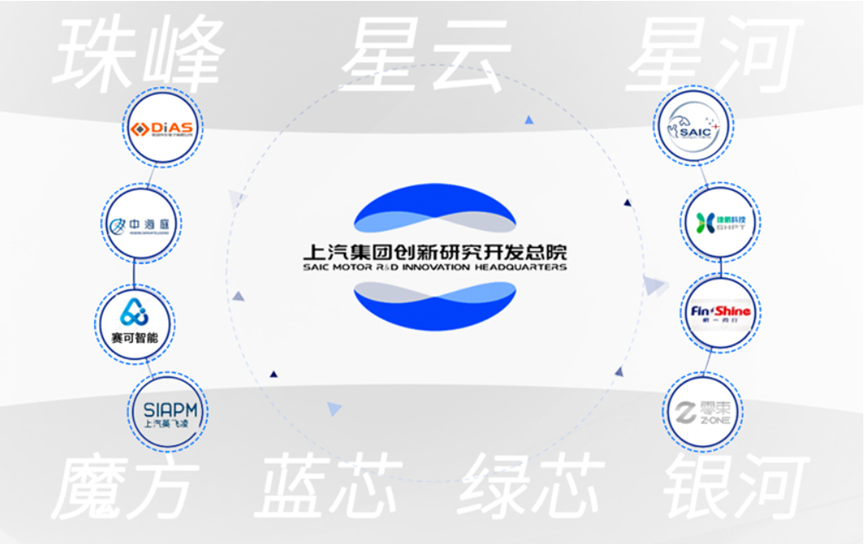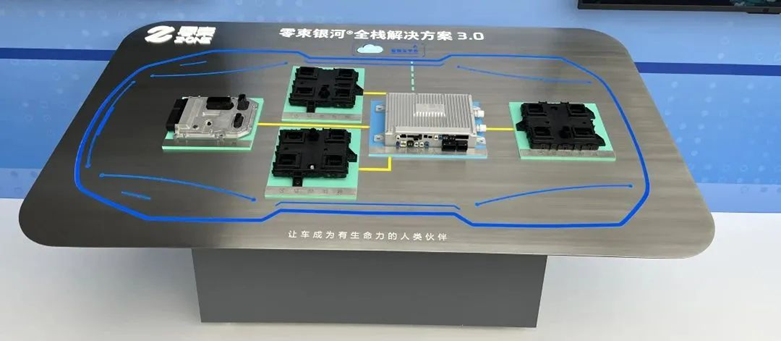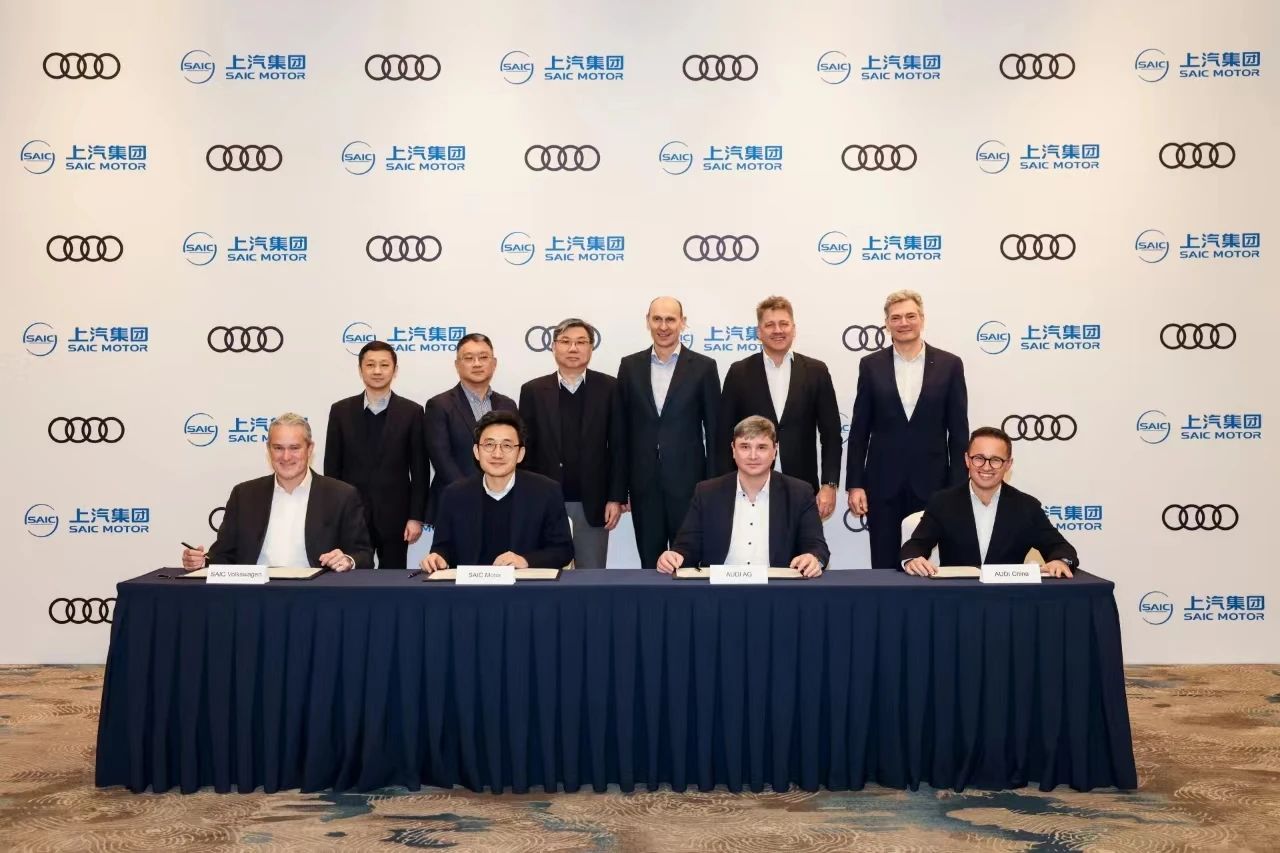In recent years, SAIC Motor has continually bolstered its technical capabilities to build a competitive edge.
By the end of 2023, SAIC Motor's workforce totaled 207,000, with 33,800 in R&D, accounting for over 16% of the total.
Additionally, SAIC Motor has kept increasing its R&D investments, spending over 20 billion RMB annually on R&D for the past decade, accumulating more than 26,000 valid invention patents.
In 2023, SAIC Motor earned the title of National Intellectual Property Advantage Enterprise, and eight of its subsidiaries, including SAIC-GM-Wuling and SHPT, received the Intellectual Property Management System Certification.
Currently, SAIC Motor has established a "1+5+7+X" technical innovation framework. This system is led by one R&D innovation headquarters, supported by five major digital capabilities, and riding on seven common production technical bases, driving overall technological innovation and iteration across all product categories.
As for core capability improvement on new energy vehicles, SAIC Motor created seven major technical bases which include three major vehicle platforms: the Xingyun pure electric platform, the Zhufeng electromechanical integration vehicle architecture, and the Xinghe hydrogen exclusive architecture, and four key system architectures: the Cube power battery system, the Blue Core powertrain system, the Green Core electric drive system, and the Galaxy intelligent vehicle full-stack solution.
As SAIC Motor's first dedicated and systematic platform for battery electric vehicles, the Xingyun platform carries the crucial role of underpinning the group's in-house R&D of electric vehicles, with notable features of scalability, adaptability, and iterative capabilities.

Photo credit: SAIC Motor
Regarding technology innovation, SAIC Motor has several subsidiaries such as Z-one Tech, SHPT, DIAS, and SAIL-Cloud. These companies focus on core technologies in new fields like new energy vehicles, software, AI, big data, and IoT. By leveraging the capital market, they are boosting the industrialization and commercialization of their innovation achievements.
By integrating the "smart brain," "agile body," and "powerful heart," SAIC Motor is animating vehicles into a new kind of "technological being."
Z-one Tech is mainly responsible for developing the "smart brain" technology. Its Full-Stack 3.0 solution uses a "central computing + regional control" strategy to integrate four domains: cockpit, driving, computing, and connectivity. This solution will be rolled out in phases, aiming to achieve mass production of generational solutions by 2025.

Z-one Galaxy Full-stack Solution 3.0; photo credit: SAIC Motor
The VMC (vehicle motion control) handles the "agile body."
SAIC Motor's VMC is China's first motion control platform using "full-domain drive-by-wire intelligent execution," integrating advanced technologies such as steer-by-wire, rear-wheel steering, four-wheel EMB (electromechanical brake), four-wheel drive motors, and electronically controlled suspension.
The VMC technology debuted in the IM L6 model.
IM Motors said the VMC smart digital chassis allows coordinated control of the vehicle's X, Y, and Z axes with six degrees of freedom, enabling innovative functions like "crab walking," which go beyond traditional vehicles' physical limits.
The "powerful heart" refers to the electric drive system, which features a super combination of a carbon fiber rotor motor and an 800V high-voltage electric drive system. It also includes a solid-state battery co-developed by SAIC Motor R&D Innovation Headquarters and QingTao Development.
SAIC Motor believes that enhancing the electric vehicle experience relies on improvements in battery and electric drive technologies.
Back in 2018, SAIC Motor began partnering with QingTao Developemnt on solid-state battery technology, investing in the company through funds in 2020, 2022, and 2023. By April 2024, SAIC Motor had poured about 2.9835 billion RMB in QingTao Development, indirectly holding around 15.29% of its shares, making it largest industrial investor of QingTao Development.
QingTao Development is also the battery supplier for the IM L6 model. According to IM Motors, the IM L6 is the first to feature the industry's first mass-produced Ultra-Fast Charging Solid-State Battery 1.0, with a capacity of 133 kWh, achieving a CLTC range of over 1,000 kilometers.
With the SiC-enabled motor, the all-wheel-drive version can zip from 0 to 100 km/h in just 2.74 seconds and run at a top speed of 268 km/h. In the future, SAIC Motor plans to use solid-state batteries in entry-level models by 2025.
Through technology innovation, SAIC Motor has also built a component supplier ecosystem. The group's major component subsidiaries include HASCO, Shanghai New Power Automotive Technology Co., Ltd., UAES, SAIC Transmission, Shanghai Jieneng Automobile Technology Co., Ltd., SAIC-CATL, and CATL-SAIC.
A notable highlight is HASCO. In 2009, HASCO went public as China's largest comprehensive automotive parts company.
It boasts a complete automotive parts supply chain, with 103 manufacturing and R&D bases in countries like the US, Germany, Thailand, Russia, Australia, the Czech Republic, Slovakia, and India. With over 80,000 staff members worldwide, it provides high-quality localized R&D and supply services to carmaker clients.
Based on SAIC Motor's financial report for 2023, the group's total revenue was 744.705 billion RMB, with over 20% coming from the components business, of which HASCO contributed 168.594 billion RMB.

SAIC Motor, Audi signing agreement; photo credit: SAIC Motor
Through building a full supply chain ecosystem, SAIC Motor has transitioned from the era of technology introduction to creating technologies independently. On May 20, 2024, SAIC Motor and Audi announced a cooperation agreement following a memorandum of understanding signed last July. They will co-develop a new platform targeting the Chinese market—the Advanced Digitized Platform. This platform will underpin a new generation of high-end intelligent connected vehicles for SAIC Audi. As part of this cooperation, SAIC Motor will provide technologies for SAIC Audi, and the intelligent technologies used in the project will be supplied by Z-one Tech. This collaboration enables Audi to significantly reduce time-to-market by more than 30% with the first model to enter the market in 2025.
From introducing foreign carmakers' technologies through joint ventures, to powering foreign partners with its own technologies, SAIC Motor is steadily broadening its path of industrial transformation and upgrading.
联系邮箱:info@gasgoo.com
求职应聘:021-39197800-8035
简历投递:zhaopin@gasgoo.com
客服微信:gasgoo12 (豆豆)

新闻热线:021-39586122
商务合作:021-39586681
市场合作:021-39197800-8032
研究院项目咨询:021-39197921
